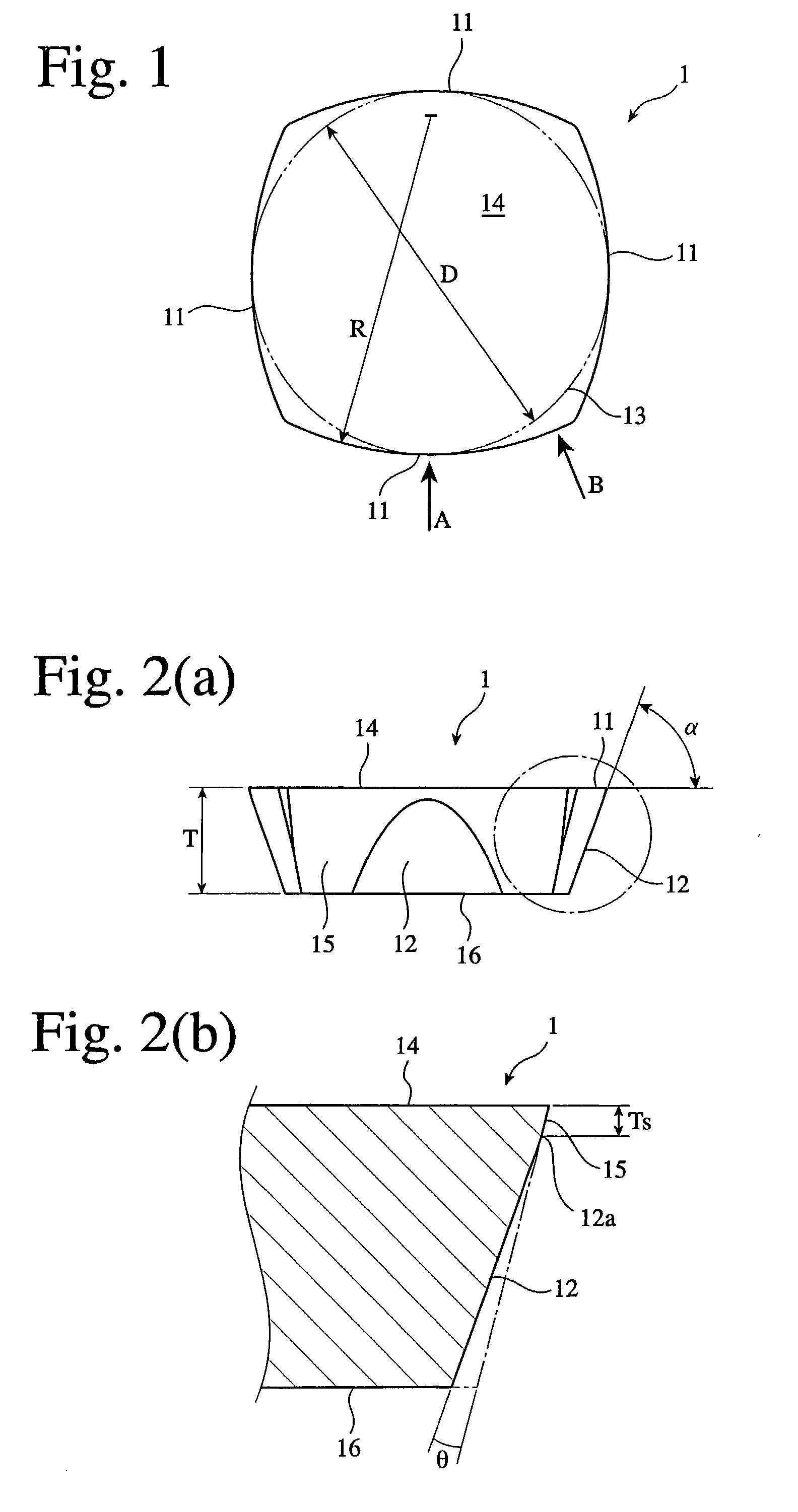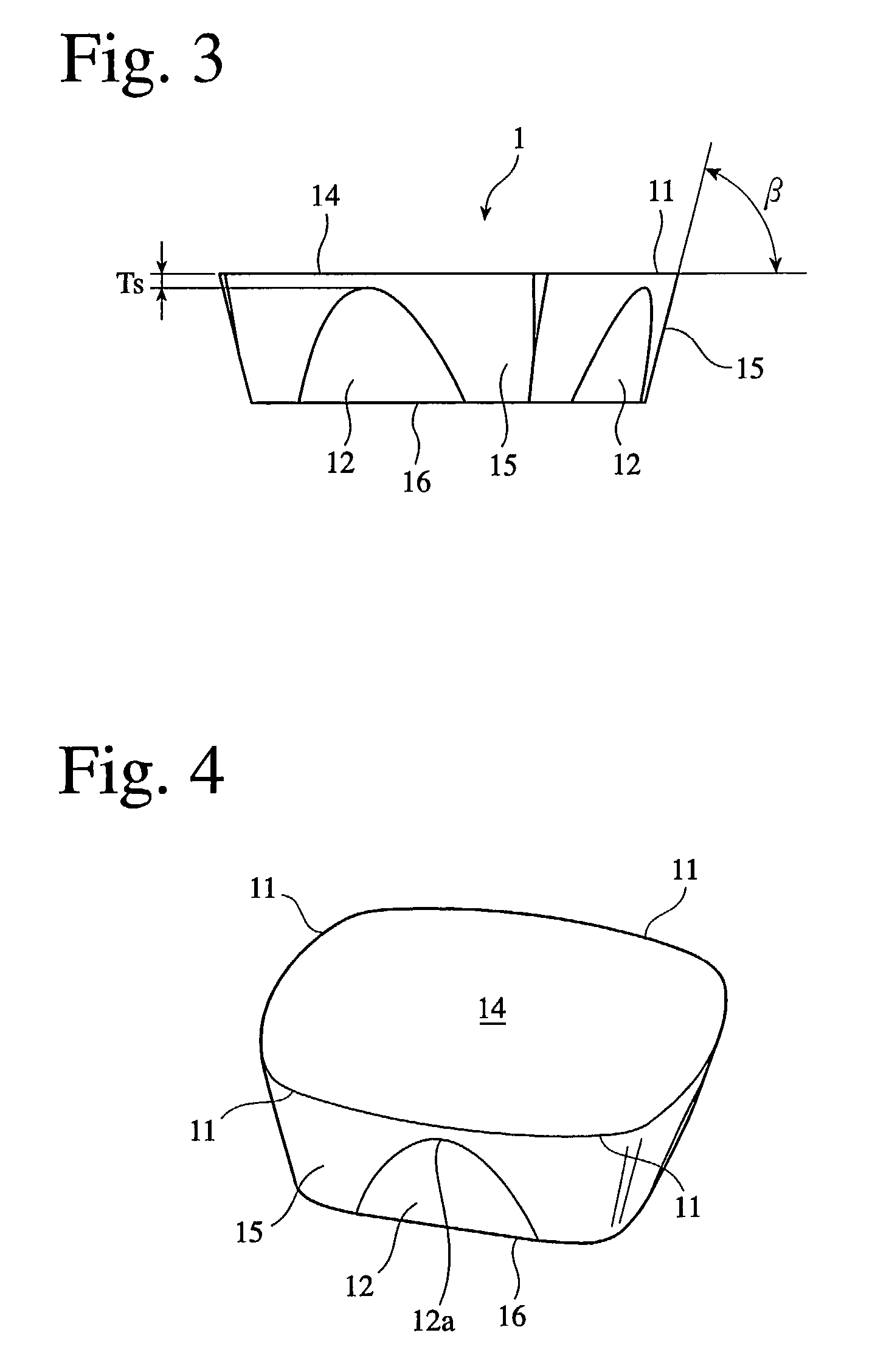Insert-exchangeable rotary tool and throwaway insert
a rotary tool and insert technology, applied in the field of insert-exchangeable rotary tools and insert-exchangeable insert-exchangeable insert-exchangeable insert-exchangeable insert-exchangeable insert-exchangeable insert-exchangeable insert-exchangeable insert-exchangeable insert-exchangeable insert-exchangeable insert-exchangeable insert-exchangeable insert-exchangeable insert-exchangeable insert-exchangeable insert-exchangeable insert-exchangeabl
- Summary
- Abstract
- Description
- Claims
- Application Information
AI Technical Summary
Benefits of technology
Problems solved by technology
Method used
Image
Examples
examples 5-8
[0079] The same effect was obtained, with a major cutting edge 11 consisting of a curved line extending from the lowermost point 7 toward the periphery and a straight line as shown in FIG. 21 (Example 5), with a major cutting edge 11 consisting of a plurality of straight lines from around the lowermost point 7 toward the periphery at a cutting edge angle .kappa. of 35.degree. or less as shown in FIG. 22 (Example 6), with a negative radial rake Rr changed intermittently as shown in FIG. 23 (Example 7), or with a radial rake Rr changed smoothly and continuously with a convex upper surface of an insert (Example 8). This effect is widely obtained ranging from a small diameter to a large diameter regardless of the diameter of cutting tool edge.
[0080] As described above in detail, the insert-exchangeable, rotary tool such as a face-milling tool, etc. equipped with the throwaway insert of the present invention can cut a work efficiently at a high feed, with a long life because of improved ...
PUM
| Property | Measurement | Unit |
|---|---|---|
| cutting edge angle | aaaaa | aaaaa |
| Diameter | aaaaa | aaaaa |
| ] Angle | aaaaa | aaaaa |
Abstract
Description
Claims
Application Information
 Login to View More
Login to View More - R&D
- Intellectual Property
- Life Sciences
- Materials
- Tech Scout
- Unparalleled Data Quality
- Higher Quality Content
- 60% Fewer Hallucinations
Browse by: Latest US Patents, China's latest patents, Technical Efficacy Thesaurus, Application Domain, Technology Topic, Popular Technical Reports.
© 2025 PatSnap. All rights reserved.Legal|Privacy policy|Modern Slavery Act Transparency Statement|Sitemap|About US| Contact US: help@patsnap.com



